-
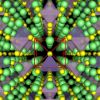 +19 +5
+19 +5Rechargeable batteries with almost indefinite lifetimes coming, say MIT-Samsung engineers
MIT and Samsung researchers have developed a new approach to achieving long life and a 20 to 30 percent improvement in power density (the amount of power stored in a given space) in rechargeable batteries — using a solid electrolyte, rather than the liquid used in today’s most common rechargeables. The new materials could also greatly improve safety and last through “hundreds of thousands of cycles.”
-
 +17 +4
+17 +4Raspberry Pi gets an official 7" touch display
The Raspberry Pi Foundation announced today the launch of the official Raspberry Pi 7″ Touchscreen Display. It is the first, and only, display to use the DSI (Display Serial Interface) port on the Raspberry Pi.
-
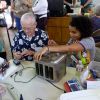 +14 +4
+14 +4We Need the Right to Repair Our Gadgets
People can fight back against planned obsolescence by fixing the tech we already own, but the consumer electronics industry isn’t making it easy.
-
 +14 +6
+14 +6Biodegradable Electronics Could Save Us From The E-Wasteland
Researchers are working on biodegradable electronics, but our 50 million tons of e-waste a year might kill the Earth before it matters.
-
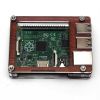 +2 +1
+2 +112 Raspberry Pi 2 model B cases compared and reviewed
So you’ve got your Raspberry Pi 1 B+ or Raspberry Pi 2 B model, but you haven’t got a case for it yet. Or maybe you’ve got a case, but you want to “level up” to a nicer one. But which one to get? There are so many!
-
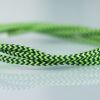 0 +1
0 +1UsBidi Charger - The World's Most Intelligent Charger for Your iPhones, iPads, Android Phones and Tablets. | Intelligent charging cable for iPhone,...
Intelligent charging cable for iPhone5,iphonoe6,iphone6s,iphone6plus,sumsang, android. Smart charger charges your phone twice as fast and keep your battery healthier,maxmises your battery life.
-
 +41 +9
+41 +93D Computer Chips Could Be 1,000 Times Faster Than Existing Ones
A new method of designing and building computer chips could lead to blisteringly quick processing at least 1,000 times faster than the best existing chips are capable of, researchers say. The new method, which relies on materials called carbon nanotubes, allows scientists to build the chip in three dimensions. The 3D design enables scientists to interweave memory, which stores data, and the number-crunching processors in the same tiny space...
-
 +31 +3
+31 +3Nerds Rage Over Ahmed Mohamed's Clock
Last week, Ahmed Mohamed’s homemade clock got him arrested and then invited to the White House. This week, the conspiracy theory backlash against his ‘invention’ begins. The Muslim teen who became an overnight celebrity after Texas cops mistook his homemade clock for a bomb has received a White House invitation, shoutouts from Facebook, MIT, and NASA, and more than $15,000 for an academic scholarship.
-
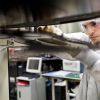 +23 +4
+23 +4Smaller, Faster, Cheaper, Over: The Future of Computer Chips
Fifty years after Gordon Moore made the galvanizing prediction known as Moore’s Law, growth in computing power is slowing.
-
 +42 +10
+42 +10Samsung TVs appear less energy efficient in real life than in tests
Independent lab tests have found that some Samsung TVs in Europe appear to use less energy during official testing conditions than they do during real-world use, raising questions about whether they are set up to game energy efficiency tests. The European commission says it will investigate any allegations of cheating the tests and has pledged to tighten energy efficiency regulations to outlaw the use of so-called “defeat devices”...
-
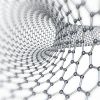 +24 +6
+24 +6IBM unlocks the secret to carbon nanotube transistors
Smaller, faster, more powerful computers?
-
 +46 +7
+46 +7Surprise: Ad Blockers Make the Mobile Web More Pleasant
Since Apple embraced mobile ad blocking for Safari in iOS 9, folks have been quick to download ad blockers like Purify Blocker and Crystal. But do they work? Using iPhones, a 4G mobile network, and the Purify, Crystal, and 1Blocker apps, the The New York Times conducted two tests over four days to measure the effects on website data size, load times, and battery life.
-
 +31 +6
+31 +6UK company reveals new technology that can transform radio frequency waves into energy
A British startup company, Drayson Technologies, has unveiled a new technology that harvests electricity from unused radio frequency waves in order to charge low-power electronic devices such as sensors and beacons.
-
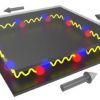 +21 +4
+21 +4The Topolariton, a New Half-Matter, Half-Light Particle
A new type of “quasiparticle” theorized by Caltech’s Gil Refael, a professor of theoretical physics and condensed matter theory, could help improve the efficiency of a wide range of photonic devices—technologies, such as optical amplifiers, solar photovoltaic cells, and even barcode scanners, which create, manipulate, or detect light.
-
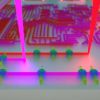 +29 +7
+29 +7Chance effect of lab's fluorescent lights leads to discovery
An accidental discovery of a “quantum Etch-a-Sketch” that may lead to the next generation of advanced computers and quantum microchips has been made by team of scientists from Penn State University and the University of Chicago.
-
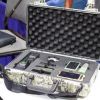 +29 +10
+29 +10Cage against the EMP: New composite cases protect against the electro-apocalypse
Faraday Cases keep secrets from leaking out of stored devices, prevent EMP damage.
-
 +43 +6
+43 +6U.S. bans e-cigarettes from checked baggage on flights
Federal authorities are cracking down on dangerous materials on airplanes — and the latest target is the electronic cigarette. A new federal rule forbids passengers on all airlines in the U.S. from packing electronic cigarettes or other battery-operated electronic smoking devices in their checked bags to protect against in-flight fires. The rule still allows e-cigarettes in carry-on bags, so travelers who use the devices have that option.
-
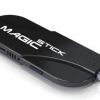 +18 +5
+18 +5MagicStick, the fastest HDMI stick PC available, runs Windows 10 and Android
Bigger is usually regarded as better, but with PCs there has been a recent trend towards miniaturization. We've seen all manner of stick PCs in the last year or so, and MagicStick is the latest contender to throw its hat into the ring.
-
 +23 +4
+23 +4Cyborg rose has electric circuits running through polymer veins
A rose by any other name would… conduct electricity? The worlds of botany and consumer electronics don’t typically overlap. But a new device has merged electronics with biology, taking a step towards a world in which plants and computers are more intertwined. The breakthrough came earlier this year in a lab in southern Sweden. Magnus Berggren, a professor of organic electronics at Linköping University, led a team that built a working electronic circuit...
-
 +36 +8
+36 +8Scientists Just Grew Wires Inside Roses
Today scientists have taken a surprising leap toward actually integrating living plants into human electronics and power systems: A team of Swedish botanists and electrical engineers unveiled a fascinating method of growing and powering conductive wires inside living plants. Led by Eleni Stavrinidou—a bioelectronic engingeer at Linköping University in Linköping, Sweden—the scientists employed a transparent, conductive gel that cut roses could naturally...
Submit a link
Start a discussion




















